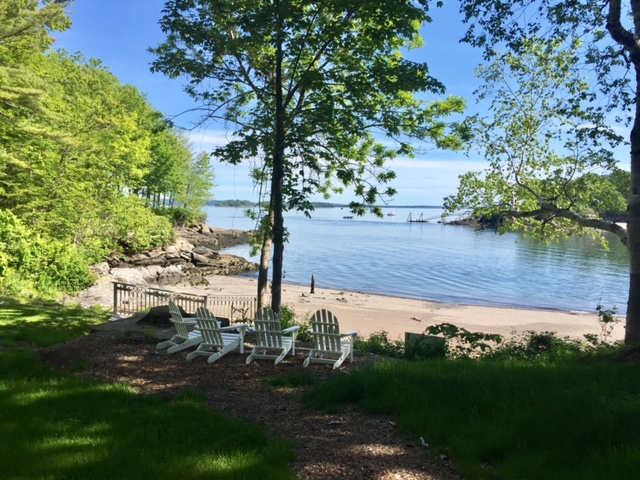
When the owners of the
Portland Harbor Hotel decided to create a new property from the former barracks of circa-1896 Fort McKinley, I was intrigued enough to include it in
a round-up for Yankee Magazine on the latest New England resorts to debut. Unfortunately, the
Inn at Diamond Cove was already closed for the season when I wrote the article. I finally paid a visit to the property over the weekend and came away impressed. As soon as you board the Casco Bay Ferry in Portland and start cruising to the islands, the stress of the mainland is washed away by the salty sea breeze. Thirty minutes later, you arrive at Great Diamond Island and are whisked away to the hotel past a vast village green that was once the military parade.
We dropped off our bags in the spacious room and began to explore the island. Children were biking and skateboarding on the paved trails to an indoor basketball court, bowling alley, tennis courts, and outdoor pool. We strolled through the forest to find an exquisite beach where sea glass and its soft edges could be spotted all over the sand. A lone kayaker and whole parade route of ducks, some who looked like they were just hatched, drifted by as we skipped rocks. This is just one of the five beaches on island available to hotel guests. We also wandered past blooming lilacs and sweet honeysuckle lining the summer estates to see Sunset Point on the western shores of the island. When we returned back to the hotel, we dined on tasty blackened bluefish paired with lobster hash.
With full kitchens in each room, families could easily spend a week in summer here.
Portland Paddle leads guided sea kayaking and SUP jaunts, a tennis pro is on staff for round robin tournaments, and a yoga instructor teaches both outdoors and indoors. This is the perfect place to unwind and relax far from the crowds.
 Guest Post and Photo by Amy Perry Basseches
Guest Post and Photo by Amy Perry Basseches Guest Post and Photo by Amy Perry Basseches
Guest Post and Photo by Amy Perry Basseches